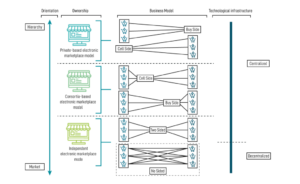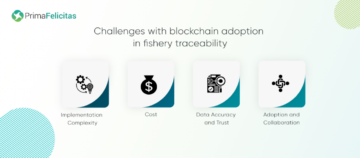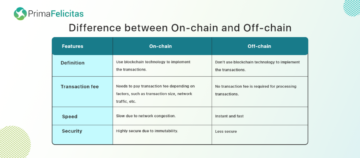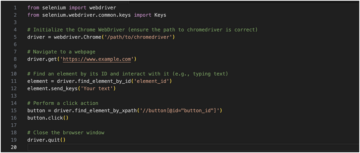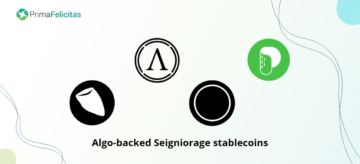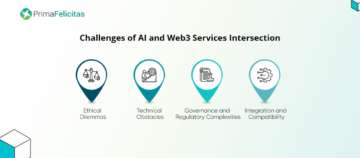
The effects of greenhouse gas emissions are being felt all over the world. Even our most basic activities have subtle carbon emissions that we are not fully aware of. Every financial transaction we make leaves a carbon footprint, from filling up our car with gas or booking a flight to even the most subtle ones like turning on your bedside lamp.
These days, countries and companies try and allot efforts to redesign their products and services to reduce their carbon footprints. However, despite the technological advancements, there is still a lack of global and standardized systems to measure carbon emissions accurately. Without such systems, sustainable approaches will only have a limited impact.
After years of study, experts have been looking at using blockchain technology to measure and find ways to track carbon emissions and create more effective carbon sequestration methods.
In layman’s terms, blockchain is a type of database. It is the technology that made the existence of the best-known cryptocurrency, Bitcoin, possible. The difference between a regular database and a blockchain is the data structure. Blockchain collects data in groups that contain sets of information called blocks. These blocks have specific storage capacities, which when filled, are chained onto the previously filled block, forming a data chain.
We know blockchain stores data for monetary transactions, but little do we know, it is also a reliable way of storing other types of data transactions as well. One example of this is IBM’s Food Trust blockchain created to trace a food product’s journey. It can track the route of a food product from its origin, through each stop it makes, and finally, to its delivery. This blockchain technology is created to aid in the countless outbreaks of e-Coli, salmonella, and other hazardous chemicals that are being accidentally put in foods. In the past, it will take weeks to even months to find the source of these outbreaks, but now, with the help of blockchain technology, tracking is possible in just a couple of minutes.
But how will blockchain help in carbon sequestration?
If we know something is bad for us but don’t know how to measure it, how can we reduce it? To reduce our carbon emissions, we must be fully aware of how much carbon footprint we are creating. Therefore, we need a technology that can measure, track, and collect our emissions accurately and reliably. Collecting carbon emissions data into a blockchain network creates a platform to measure it, helping to administer a network that can report emissions in a stable and tamper-proof audit trail.
An example is Mercedes-Benz’s pilot project for transparency in CO2 emissions. The blockchain will be able to monitor the production of car batteries and the CO2 emissions involved in production.
Imagine a world in which carbon emissions can be tracked transparently and reliably. Companies will be able to sell a product and take into consideration the carbon impact it creates. And governments will be able to map and trace emissions transparently. And most crucially, consumers will be able to understand the environmental impact of the products they are buying – both positive and negative. And with millions of micro-transactions, it will scale up to make a huge collective impact.
It is also by measuring, tracking, and reporting that we ensure that emissions-reducing projects are making the impact they claim in a more accurate, transparent, and cost-effective way.
Today, countries have different approaches to measure carbon and calculate carbon credits, leading to challenges such as high effort and cost, inaccurate pricing, poor regulation, and low adoption. Thus, while the carbon credit system is a step in the right direction, the lack of standardization limits its effectiveness. Blockchain technology leverages distributed ledger systems and auditable trades, making it a fitting solution to address these issues.
Reducing global carbon levels is something that governments, organizations, and individuals need to work together to achieve. Thus, it is not an overemphasis to say that we all need to take responsibility for the carbon consequences of every action we make. By creating a global, trusted, and accessible carbon tracking technology, with the help of new blockchain technologies available to us, we are on the verge of being able to do so.
Article Written by: Katreena
For the exclusive use of www.primafelicitas.com
Author Bio: Katreena is a scientist and a life hack specialist. She’s authored scientific journals on biotechnology and molecular biology. To take a break from scientific journals, she puts her mind into writing about lifestyle, health, and sustainability. She strongly believes that kindness makes the world go round.
- Action
- activities
- Adoption
- All
- audit
- batteries
- biology
- biotechnology
- Bitcoin
- blockchain
- blockchain technology
- Buying
- car
- carbon
- carbon emissions
- carbon footprint
- chemicals
- co2
- co2 emissions
- Collecting
- Companies
- Consumers
- countries
- Couple
- Creating
- credit
- Credits
- cryptocurrency
- data
- Database
- delivery
- Distributed Ledger
- Effective
- Emissions
- environmental
- Exclusive
- experts
- Finally
- financial
- flight
- food
- GAS
- Global
- Governments
- greenhouse gas
- Greenhouse gas emissions
- hack
- Health
- High
- How
- How To
- HTTPS
- huge
- Impact
- information
- involved
- issues
- IT
- leading
- Ledger
- lifestyle
- Limited
- Making
- map
- measure
- months
- network
- Other
- pilot
- platform
- poor
- pricing
- PrimaFelicitas
- Product
- Production
- Products
- project
- projects
- redesign
- reduce
- Regulation
- report
- Route
- Scale
- sell
- Services
- So
- storage
- stores
- Study
- Sustainability
- sustainable
- system
- Systems
- Technologies
- Technology
- The Source
- track
- Tracking
- trades
- transaction
- Transactions
- Transparency
- Trust
- us
- verge
- Work
- world
- writing
- years

